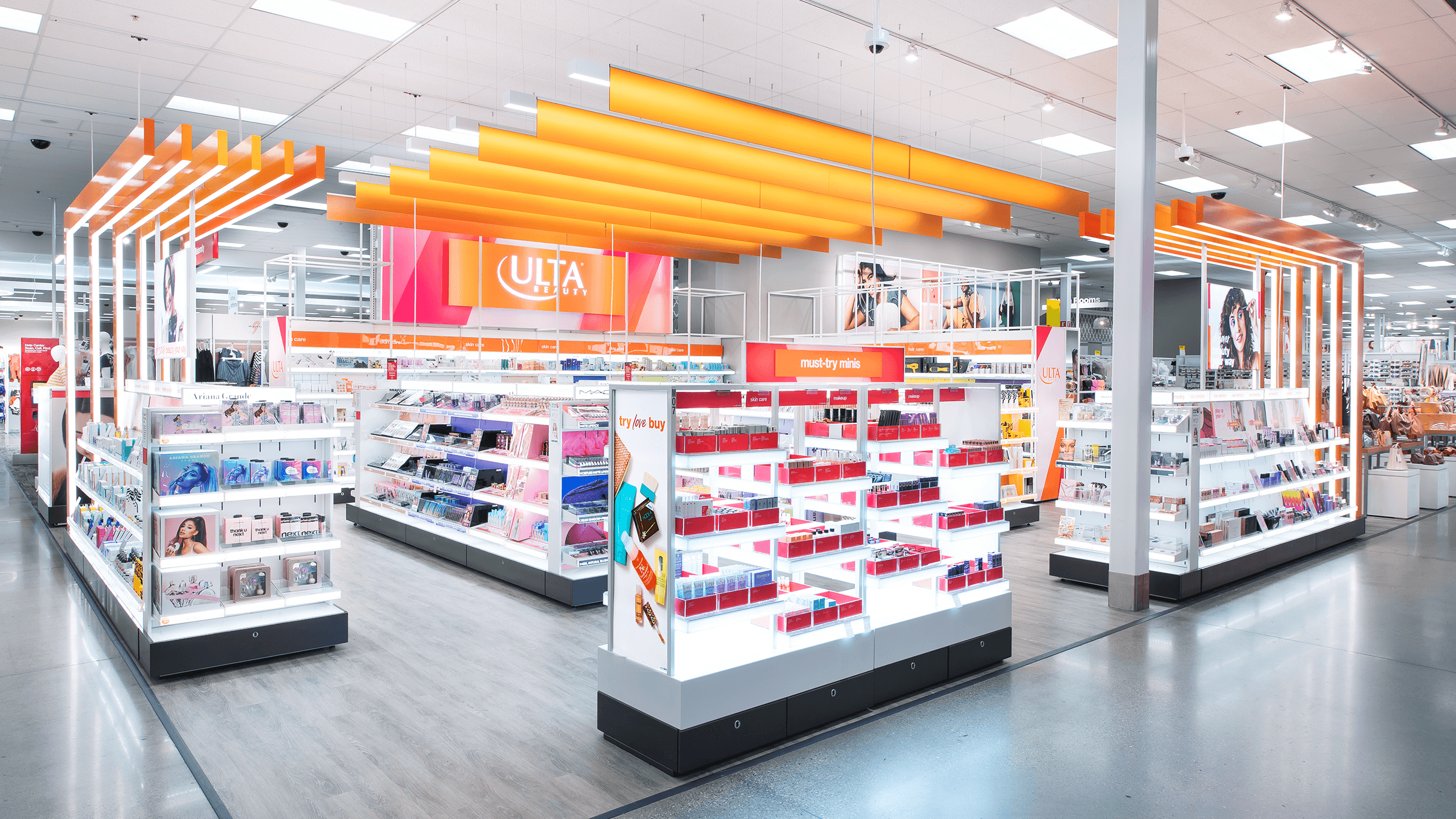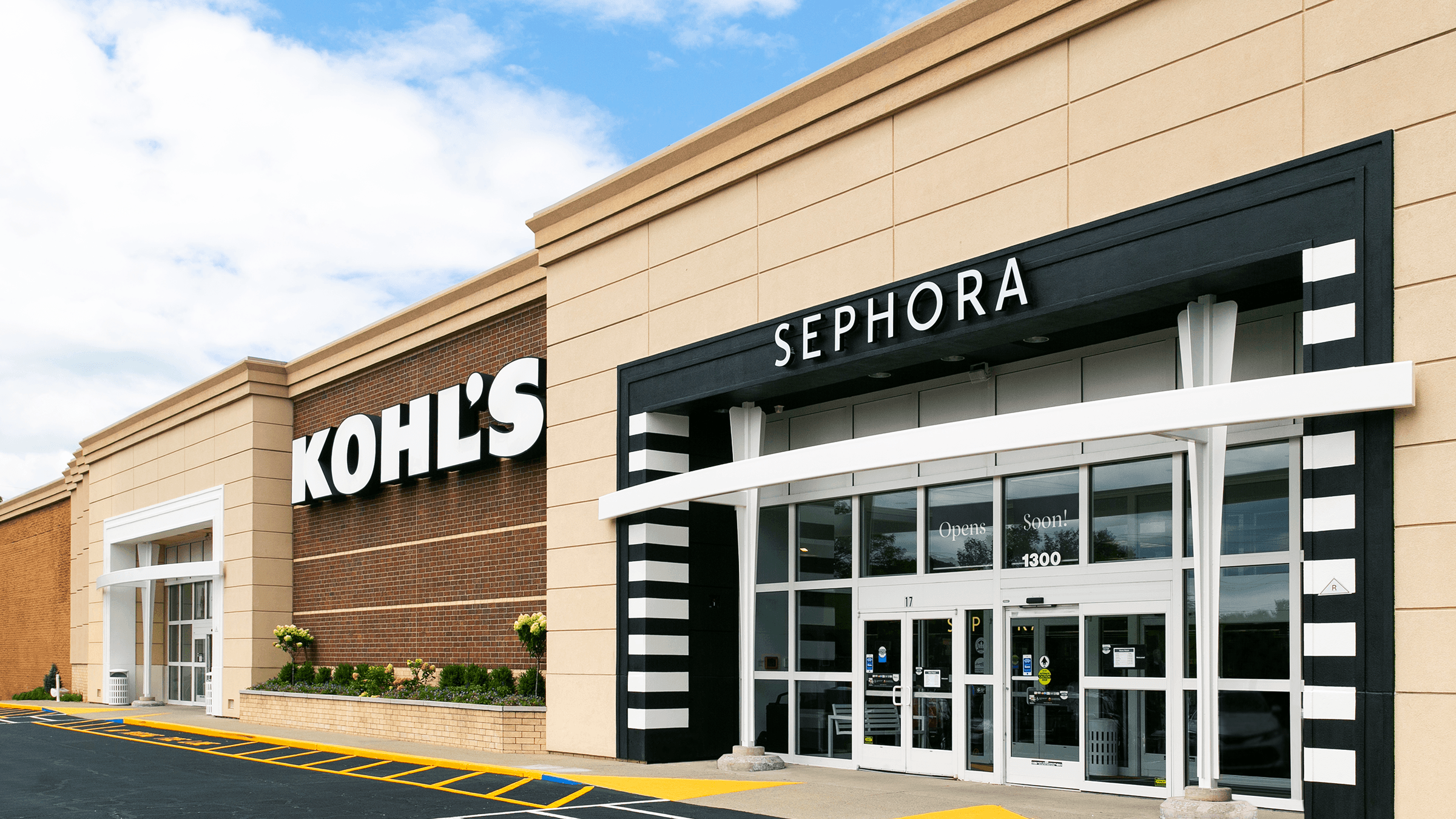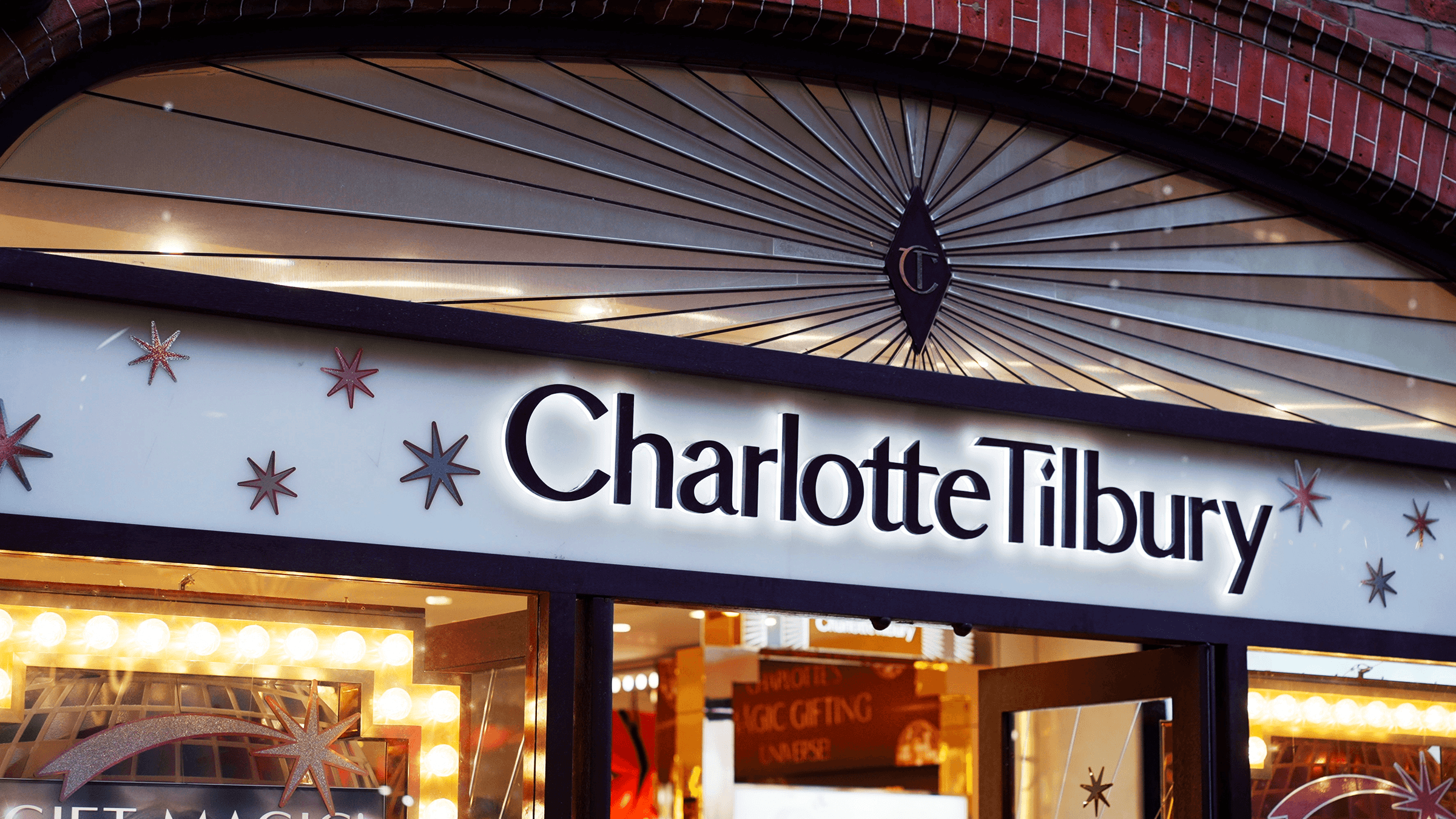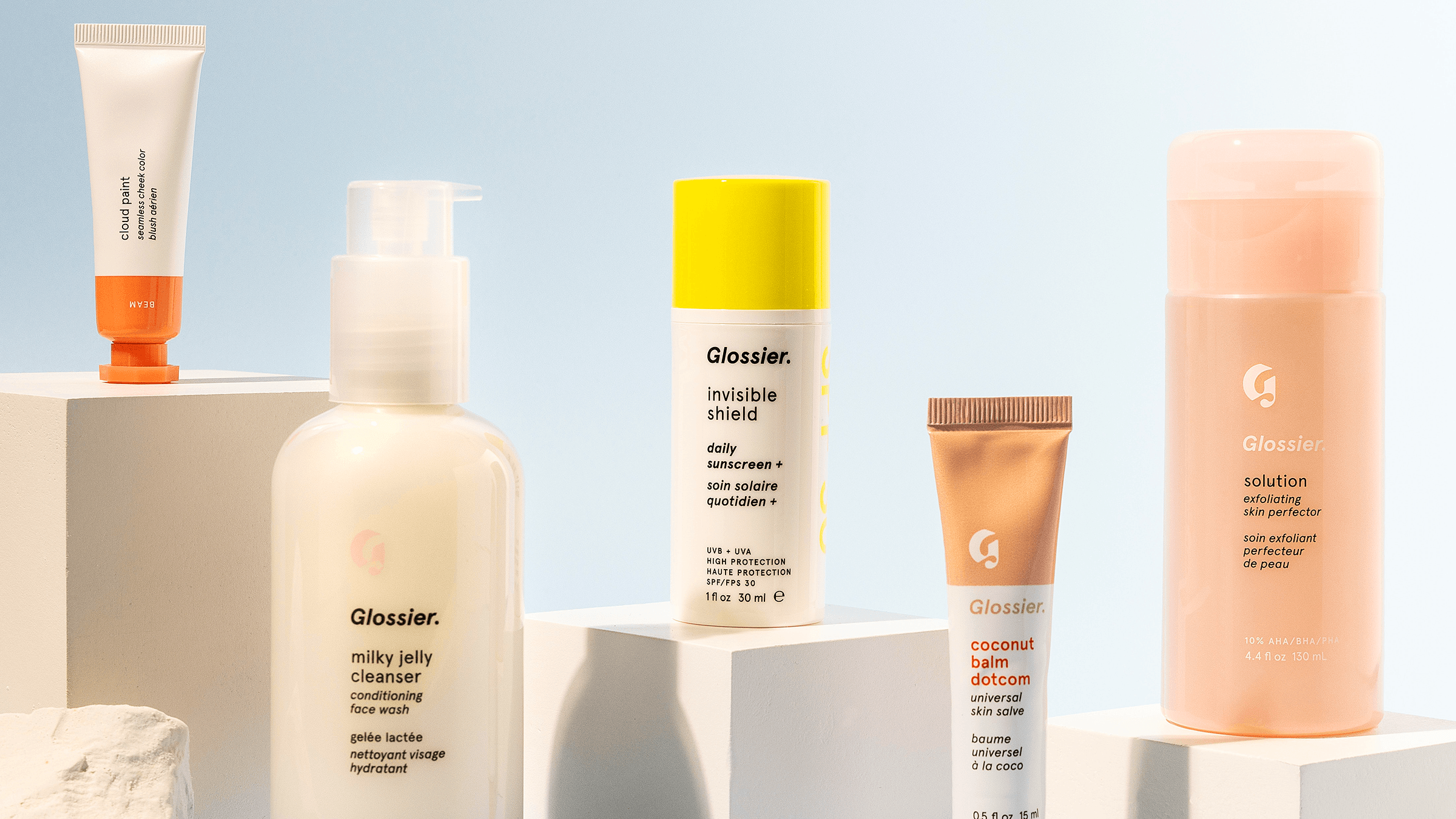When Glossier launched in 2014, it felt like a new era for the beauty industry. The brand popularised the now-ubiquitous “skincare first, makeup second” approach, and became the first cosmetics label to gain a truly cult following of millennial consumers.
What differentiated Glossier was its laser-focus on community. By operating an exclusively direct-to-consumer sales strategy, the brand had complete control of its branding, messaging, and relationships with customers. The majority of sales took place online, with stores designed to provide a fun (and highly Instagrammable) experience. It was an excellent approach: after just four years, Glossier had hit $100m in revenue, and today the business is valued at $1.8bn.
But this month, for the first time ever, Glossier products will be available through a third-party beauty retailer: Sephora. The move not only marks a clear step away from the brand’s original strategy – but is indicative of the direction of travel in the beauty industry today. Other online-only beauty brands which found popularity in the late 2010s (like The Ordinary, Drunk Elephant, and Fenty Beauty) have all since abandoned their DTC strategy in favour of striking retail partnerships. What started as brand-controlled pop-ups have become permanent fixtures, both in-store and online.
When Emily Weiss founded Glossier, she told journalists and investors that she believed the world was ready for a “third wave” of channel innovation in beauty. This latest move from Glossier begs the question: are we now ready for a fourth?
It’s easy to see the benefits of DTC. Cutting out the middle man allows businesses to sell with better margins (at least in theory), collect swathes of customer data, and develop closely-monitored relationships with their customer base. For companies concerned with brand integrity, DTC is an excellent way to mitigate risk.

But times have changed: ten years ago, acquiring customers through Facebook and Instagram was a fail-safe and cost-effective approach. Today, consumers are more discerning, and the cost of paid advertisements on social platforms has sky rocketed. Last year, research from Big Technology into public DTC companies with market caps of more than $800m found that the majority were “drastically underperforming” due to “revenue contraction, shrinking margins, runaway losses, or a combination of all three.”
And while the pandemic accelerated ecommerce sales, post-Covid customers would rather visit a physical store in-person. Combined with a cost-of-living crisis (during which people are less likely to shop online), beauty businesses must necessarily explore sales channels away from brand-owned ecommerce.
Over the past few years, physical beauty retail has gathered momentum. When London’s Battersea Power Station reopened as a luxury retail destination in October 2022, it featured a total of eleven beauty and wellness stores, including a new flagship format from Space NK including expertise pods for skin care consultations. Elsewhere, French player Sephora is relaunching its bricks-and-mortar offering in the UK next month, and in the US, beauty retailer Ulta Beauty recently announced a 28% spike in quarterly profits.
What feels particularly interesting about the move towards omnichannel in the US is the democratising effect it is having on the sector. When once prestige cosmetics and specialist skincare were only available in luxury department stores or pharmacies, today the likes of Fenty Beauty, Olaplex and Tula can all be bought at Target, thanks to a highly successful shop-in-shop tie-up between the big-box retailer and Ulta Beauty. Similarly, Sephora – part of the LVMH ecosystem and known for its shiny beauty halls – has expanded its partnership with Kohl’s, bringing its high-end products to a distinctly mass-market environment.

In many cases, brands are forging mainstream retail partnerships themselves. Previously available only from a dermatologist’s office, Johnson & Johnson-owned skin care brand Neostrata recently launched into Target. The same can be said for ‘skinfluencer’ brand Selfless by Hyram, which at the beginning of this year opted to exit Sephora in favour of a tie-up with the retailer. Speaking on the move, founder Hyram Yarbro – a Gen Z online figure – noted that “Target represents what I’ve always wanted the brand to be, which is more accessible. [This partnership means that] we can get in the hands of people where they’re really shopping.”
In some ways, this development feels inevitable. Ecommerce made shopping for beauty a more accessible experience – is picking up our cosmetics alongside our groceries or homeware the next natural step?
“Ecommerce made shopping for beauty a more accessible experience – is picking up our cosmetics alongside our groceries or homeware the next natural step?”
Of course, online is still a critical channel for beauty brands. For one thing, selling directly to customers brings unparalleled insight on buying habits. In a time when success hangs on predicting consumer behaviour during financial disruption, this is more important than ever.
I caught up with Victoria Campbell, Managing Director at skincare label Dr Sam’s, who suggested that success is about creating a seamless balance between online and in-store. “The future is about a ‘phigital’ experience,” she told me, “for example scanning QR codes at points of sale to get more education, in-store video content, and making sure your social media presence aligns with your physical retail presence. Ultimately, it’s about making sure all touchpoints are connected.”

There are also many avenues to be explored beyond ecommerce and physical retail. As the technology develops, it will be interesting to see which brands truly embrace the gamification of beauty in the metaverse. Charlotte Tilbury is leading the way in this arena – the beauty business is already on the fourth generation of its virtual store. “In China, social commerce is a very ordinary way of shopping,” reflected Victoria. “I imagine we’ll start to see things like livestream shopping and TikTok take hold in the US and the UK going forward.” Indeed, on Friday, Ulta Beauty announced a new livestream shopping feature.
“I imagine we’ll start to see things like livestream shopping and TikTok take hold in the US and the UK going forward.” – Victoria Campbell, Managing Director, Dr. Sam’s
The hospitality space also feels ripe for disruption. While labels such as Molton Brown and Rituals have long reached customers through exclusive presence in hotels, there’s ample opportunity for younger brands to connect with a new generation of holidaymakers and hotel visitors through hospitality tie-ups.
This is certainly an exciting time for the beauty industry. As we move into the next era of omnichannel sales strategies, brands need to think carefully about their retail partners, about controlling their messaging, and about how to differentiate in a highly crowded market. What do you think is next in the space? I’d love to hear from you.








